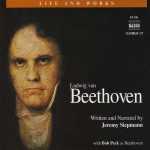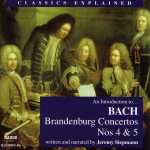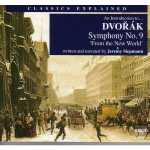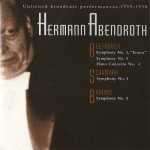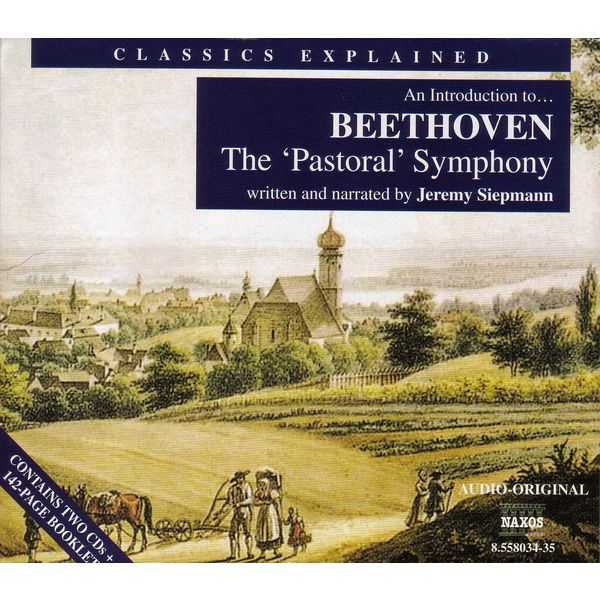
Composer: Ludwig van Beethoven
Performer: Jeremy Siepmann
Number of Discs: 2
Format: FLAC (tracks)
Label: Naxos
Catalogue: 8558034-35
Release: 2002
Size: 600 MB
Recovery: +3%
Scan: yes
Symphony No. 6 in F Major, Op. 68, “Pastoral”
CD 01
I. Awakening of Cheerful Feelings on Arriving in the Country
01. On Beethoven’s Openings
02. Opening phrase of the ‘Pastoral’: ood, Symbolism and Musical Function
03. Musical Acorns: the outline of melody; the shape of a question
04. The ‘question’ in the ‘Pastoral’ repeated…
05. …and answered
06. The opening phrase ends on a note full of pregnant expectation
07. Starting with a stop
08. The rhythmic profile of the opening phrase; a two-part construction
09. Phrase One, Part One
10. Phrase One, Part Two
11. The properties of rhythmic ambiguity; the ‘question’ of Phrase One answered
12. Phrase Two: from meander to march
13. The makings of a conversation: contrast and variation
14. Repetition as A Major factor, but it’s never mere repetition; each time something new is added
15. From soft to loud and back again; instrumental enrichment from horns and double-basses
16. Mega-repetition: violins play exactly the same little fragment ten times in a row
17. But no two repetitions are quite the same; varieties of contrast
18. More variation: pitch rises; violins joined frist by the clarinet, then by the oboe
19. Return to opening idea, but with new instrumentation and articulation
20. Clarinets, horns, bassoons and flutes now join expansive variation
21. ‘New’ insistent rhythm derived from the first four notes of the piece
22. With the dawn chorus, a whole forest is waking up; feelings of rapture
23. First violins play a derivative of the opening figure, joined by wind and strings
24. Sudden change of key, from the home key (tonic) to the dominant
25. Arrival at the hightly contrasting second main theme
26. Unusual properties of second main theme
27. Rhythmic clash between simultaneous groups of three beats and groups of two
28. winds fall selent as the violins and violas interrupt with a new theme
29. Winds answer with the same morse-like rhythm but at half the speed
30. Crescendo leads to strings’ acceleration of the pace with no increase in tempo
31. Beginning of coda, directly based on morse-like rhythm of the main theme
32. Strings reiterate small fragment of the new theme 13 times in a row
33. A simple, rising violin phrase leads to a repeat of the Exposition
34. The nature and function of the Development section in sonata form; ‘harmonic’ rhythm explained
35. The nature of harmonic rhythm illustrated
36. A typically Beethovenian exercise in the frustration of expectation
37. Repetitiousness and magic effected largely through instrumental colour
38. Then come four, almost identical bars
39. Even greater magic, with sudden switch of key and tone colour
40. Entire Development section up to this point
41. The Development continued
42. Increased unease and suspense as harmonic rhythm accelerates
43. Arrival at the point of Recapitulation; back to the beginning, as a reminder
44. Beginning of Recapitulation
45. More Beethovenian frustrations of expectations which he himself has just set up
46. Harmonic rhythm speeds up, giving the impression of an accent on every beat
47. Prevailing mood restored; new theme from clarinets and bassoons
48. Violins and violas take up theme; horns, cellos, double-basses accompany
49. A hush falls, followed by a return of the movement’s most familiar tag in strings
50. Clarinet takes up the running triplet figures of the main closing theme
51. First violins take up the opening phrase again, accompanied by double-basses
52. Beethoven slips in one last surprise; cue to complete movement
53. First movement (complete)
II. Scene by the Brook
54. General introduction; the birth of a melody
55. Brook music quickens; syncopated horns; theme changes hands; evocation of birdsong
56. The ‘motto’ theme introduced by violins and treated to round-like overlappings
57. Transitional ‘bridge’ theme sets off for new key group. But is it? And does it?
58. Will he, or won’t he? Beethoven keeps us guessing
59. The run-up to the Second Group
60. Arrival at the Second Group; but where is the actual Second Subject?
61. A new tune is introduced by the bassoon
62. Tune is repeated three times
63. …which the full orchestra now takes up in varied form
64. Theme carried by flutes and first violins in a charmingly waltz-like development
65. A reminder of precedent
66. Back to the prevailing triple-metre with violins, bassoons and flutes
67. Another reminder of precedent…
68. …and a cue to some unexpected departures
69. The transformational magic of Beethoven’s ‘tone-painting’ – and a new varation
70. Conversation of clarinet, flute and oboe on the way to the Development
71. Harmonic movement emphasised by violins; oboe takes up the First Subject
72. Flute and oboe discuss the First Subject, before arriving together at the Transition
73. Gains in volume and intensity lead to a new key-change
74. More thematic transformation through the agency of tone-colour
75. Harmonic fluideity – instability – as the central engine of the Development section
76. Harmonic instability, thematic dissolution increase, then lessen with approach of Recapitulation
77. Recap. and transformation: key and material are right, but what a change of presentation!
78. Just when we know what’s coming, Beethoven changes the rules (or at least the harmony)
79. Transformation by reorchestration; switch to long sustained chords; then everything stops
80. The silence is broken by voices of nightingale (flute), quail (oboe) and cuckoo (clarinet)
81. First violins bring back motto theme
82. Cue to complete movement on CD 2
CD 02
01. Second movement complete
III. Merry Gathering of Country Folk
02. Beethoven and the Scherzo: an introduction; Part One of opening phrase taken by the strings
03. Immediate response; Part One is answered by a march more singing, continuous legato
04. Entire orchestra gives out opening theme, this time fortissimo and with powerful accents
05. A mustical ball game. The contrast of this and the first two movements could hardly be greater
06. After quietly teasing suspense, Beethoven mocks village band, first the oboe, then the bassoon
07. Clarinet joins in, then horn takes the tune – the dance no longer boisterous but lyrical
08. Strings sweep the village musicians aside and hurtle us into the new, boisterous ‘Trio’ section
09. The air is alive with the sound of (mock) bagpipes, tambourines and fifes
10. Coda; begins as the movement itself begins, but soon diverges in harmony and instrumentation
11. Original layout compressed; order of events is changed nd Beethoven springs a big surprise
12. Third movement (complete)
IV. Thunderstorm
13. Unparalled portrait of nature’s power over humanity, with some stupendous orchestration
14. Self-generating form and terror of total unpredictability; ‘anxiety motif’ from the violins
15. The ‘lashing rain’ motif – downward-driving arpeggios from the first violins and violas
16. The ‘lightning’ motif, and its recurrnece later in the movement
17. ‘Rain’ motif, derived from descending scale pattern from the violins at the outest
18. Shivering tremolandos from the strings and increasingly eerie harmonies from the wind
19. Steady crescendo in strings; terrifying, downward spelling-out of chords in the violins
20. Extremes of dynamic contrasts; the unsettling, disturbing, undermining effects of chromaticism
21. Abandonment of melody, and most traces even of rhythm; sustained, discordant harmony
22. Storm dispersed, the sun reappears, bathing sodden earth below with its life-giving rays
23. Cue to complete preformance of Fourth Movement
24. Fourth movement (complete)
V. Shepherd’s Song – Happy and Thankful Feelings After the Storm
25. ‘Yodelling’ figure from clarinet, then horn, the violins, who introduce the main theme
26. Details of instrumental magic in the interplay of horns, cellos, clarinets and bassoons
27. Main theme heard three times in a row – and yet never the same way twice
28. Now we get the whole orchestra, playing full out, with violins all double-stopping
29. Transition to the next section, based on the last two notes of the main theme
30. The rhythmic basis of new transition theme, first in violas, then takes up by first violins
31. Another rhythmic details of extended transition comes increasingly into the foreground
32. …and is then heard in expanded version, taken in sequence by the strings, from the top down
33. New phrase, introduced by violins, brings us resoundingly back to the opening material
34. Main theme, re-orchestrated; unexpected drift into another key and a new, gently flowing theme
35. Hints of a return to main theme; long ‘pedal point’; running commentary from the violins
36. Main theme returns, but significantly altered, and not entirely intact
37. Running commentary now heard in the middle, with alternating pizzicatos both above and below
38. Part Three of main theme given to entire orchestra, leading to final appearance of Theme two
39. Extended coda; overlapping variations of main theme, rather in the manner of a round
40. Suddenly the scene changes. A variation of the ‘running commentary’ cited in Tracks 34 and 36
41. The crowning glory, as the Shepherd’s Song of Thanksgiving takes on a ‘heavenly’ magnificence
42. Cue into complete performance of Fifth Movement through the ‘gateway’ of the Fourth
43. Fourth and Fifth movements (complete)
